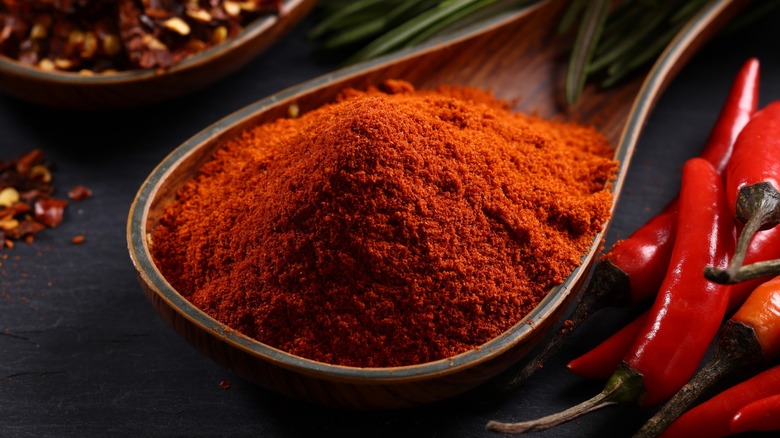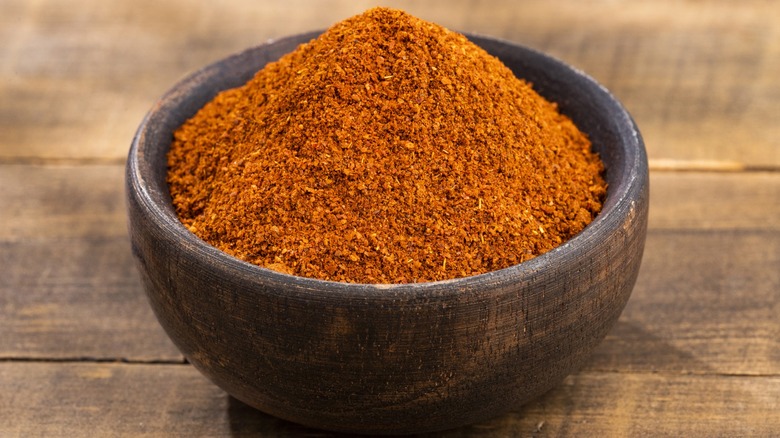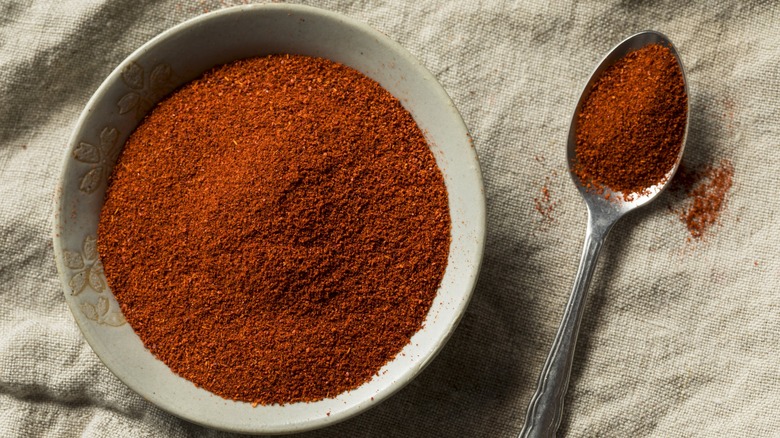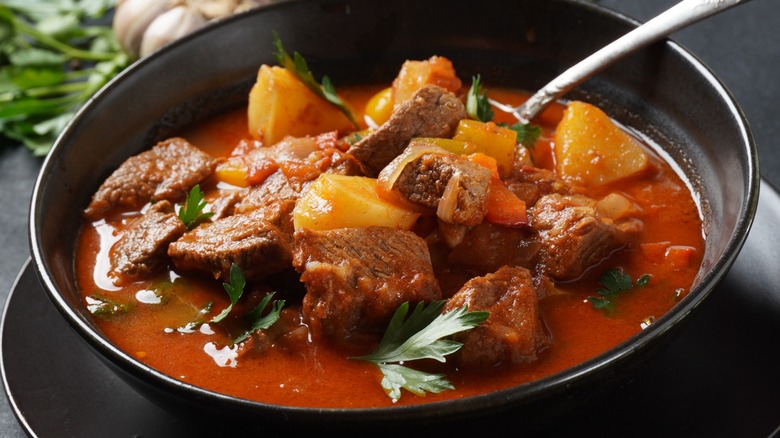The Difference Between Regular And Smoked Paprika
Powdered peppers are some of the pantry's most versatile spices. From the easy-to-use kick delivered by cayenne to the stew-building chili powder to the intricately smoky chipotle, they can each imbue a distinct essence in a convenient powdered form. But, of all the pulverized dried pepper concoctions, few are more universal than paprika. The brightly colored spice made from Capsicum annuum peppers comes in many types and is utilized in the cuisines of Spain, Mexico, the Balkans, and Hungary.
With so many different varieties produced even in a single country, categorizing this form of processed pepper can be difficult. The generic offering — often simply labeled "paprika" at the grocery store — delivers a balanced taste that's not particularly bold. And then there's its woodsy counterpart, smoked paprika, which delivers a much more pungent and distinctive flavor. Although the two dried chiles may seem visually indistinguishable, they're characterized by different production processes and culinary applications. To make the most of their flavor when cooking, it's important to know how they differ.
What is regular paprika?
What's labeled as "regular" paprika can actually encompass a wide area of production. The simple spice jar might include peppers processed from Hungary, California, and elsewhere in the Americas. Since such paprika is often standardized and sold at a more approachable price, it's unlikely to stem from a premium grade with a more assertive flavor. Instead, such esteemed varieties — often Hungarian — are usually categorized and labeled independently.
When regular paprika is produced, the peppers are dried and then ground into a boldly colored powder. The process typically uses red bell peppers or similarly mild types of chiles with no spice, so the resulting mixture isn't going to contain a hot kick or overly pungent peppery notes. And, unlike sweet paprikas, don't expect bright sugary notes or complex flavors, either. Instead, regular paprika is most prized for its subtle flavor and attractive red-orange color, which gives an appetizing pop to a platter of deviled eggs or a nice dash of color atop a dip.
What is smoked paprika?
Smoked paprika has a much bolder character, thanks to an extra processing step. The peppers are dried using a wood-based — typically oak — fire, which infuses the fruits with smoke. Drying and smoking can last upwards of two weeks, eliminating nearly all the peppers' water content in the process. The smoky flavors then concentrate in the pepper's natural oils. As a result of this more intensive drying process, smoked paprika has a much finer, less clumped texture. However, since it's also made from red peppers, the color has a similar vibrancy, though it tends to be a slightly darker red.
While smoked paprika is made in different regions, the Spanish variant, pimentón, is its most noted variety. This dried pepper creation has a traditional manufacturing process upheld by stringent regulations. It comes in sweet, spicy, and mild varieties, though all exhibit a deep, smoky flavor. Reminiscent of BBQ, smoked paprika's taste is much bolder — sometimes even spicy — and has pronounced earthy notes. As a result, it has different culinary applications than regular paprika.
Smoked and regular paprika offer different flavors
How you cook with paprika really depends on the type — and strength — of flavor you're looking for. Due to their varying degrees of intensity, the two main paprika types have very different culinary uses. Regular paprika's flavor is balanced and mild and won't dominate a dish. It's perfect for last-minute toppings, as a colorful component in spice blends, or mixed into a subtle sauce.
Sweeter Hungarian paprika varieties, meanwhile, are essential to cooking in Hungary, forming an aromatic sauce for dishes like chicken paprikash and goulash. If the flavor palate aligns with paprika, don't fret about whether or not to include this variety; it's unlikely to overwhelm the dish. On the other hand, smoked paprika is utilized as a predominant flavor, its smoky character often defining a dish.
It goes especially well with meat, functioning as a delicious dry rub. It can also add a strong woodsy flavor to a sauce — like a smoky romanesco — or can even imbue the flavor of fire into a bloody mary cocktail. The spice is also used to flavor slow-cooked dishes such as Cuban black beans, and in Cajun stews, like jambalaya and etouffee. Its smoky character may override gentler flavors, though, so it pairs best with other similarly bold ingredients.



